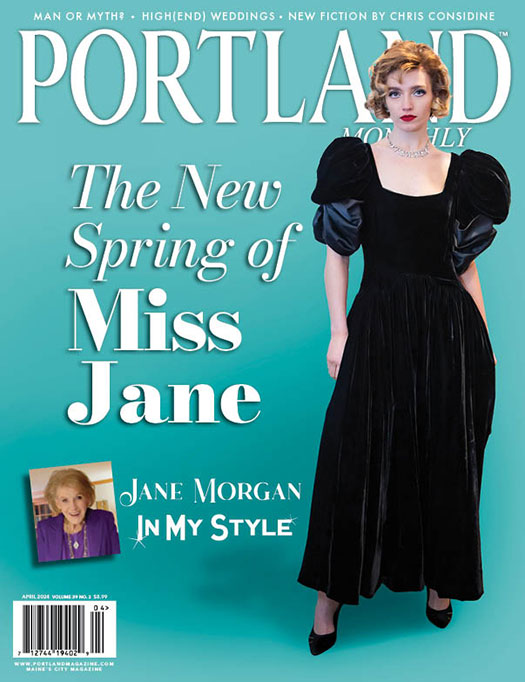Portland Monthly Wins Three National Prizes at the 2019 American Graphic Design Awards.
November 11, 2019

NEW YORK– Portland Monthly is recognized with three prizes at the prestigious national American Graphic Design Awards for design excellence by Graphic Design USA, bringing the publication’s updated total of GDUSA awards to 75.
The American Graphic Design Awards is a nationwide, juried competition from one of the most respected design-industry resources. The awards have been presented for 56 years, and the judges are composed of industry leaders in all aspects of graphic design. Among the 2019 winners are Amazon, Hearst Publishing, NBC Sports, PepsiCo, the U.S. Olympic Committee, US Veterans Affairs, and Yale University.
“From more than 12,000 entries, a small handful of projects—including several publication designs by the Portland Monthly magazine team—were selected as winners,” says GDUSA Editor and Publisher Gordon Kaye. “The performance is, in a nutshell, exceptional—but not surprising given Portland Monthly’s consistent record of design excellence.”
Graphic Design USA’s prize announcement of the awards, including the individual issues of Portland Monthly that received the honors:
CONGRATULATIONS!
Your organization has been selected as a winner in the 2019 AMERICAN GRAPHIC DESIGN AWARDS. For 56 years, Graphic Design USA has sponsored competitions that spotlight areas of excellence and opportunity for creative professionals. GDUSA’s American Graphic Design Awards is the original and the flagship, open to everyone in the community and honoring outstanding work of all kinds and across all media. Roughly 10,000 entries were submitted; a highly selective 10% are chosen as a winner — that includes you! — and recognized with an Award Winners Certificate. In the rare case of multiple awards, a Certificate is enclosed for each individual winning piece.
Portland Monthly Magazine, May 2019 Cover Design
Portland Monthly Magazine, Winterguide 2019 Cover Design
Portland Monthly Magazine, Summerguide 2018, A Thousand Julys Editorial Design
“Not only was Anderson .Paak heard all over Portland, but we ensured he was seen all over Portland—before his event—on our award-winning May 2019 cover,” says Colin W. Sargent, founding Editor and Publisher of Portland Monthly.
Portland Monthly Columnist Honored by Wine Spectator.
We are very proud of our Everyday Sommelier columnist Ralph Hersom for being named a “major industry figure” in the latest Wine Spectator.
“The most recent issue of Wine Spectator features its annual Grand Award winners, an honor bestowed on restaurants around the world with the best wine lists. In the same issue, Wine Spectator looks back at “The Class of ’81,” the 13 restaurants that won the award in the first year it was given. Our own Ralph Hersom is noted in that article as one of the “major industry figures” who went from Cellarmaster at Windows on the World—one of the original 13—to running the wine program at another Grand Award winner, Le Cirque.
Ralph’s life in wine began as a sommelier in San Francisco and progressed to his stints at the best restaurants NYC and, ultimately, to Hingham where “Ralph’s Hingham Wine Merchant” became his fourth fine wine shop. So, if you are looking for a specific wine—no matter how hard it may seem to acquire—or if you are looking to start building a cellar of your own, Ralph Hersom is the man to see. He’s more than eager to share with you decades of knowledge and experience, and will source any wine for your cellar or a special occasion.”
Portland Monthly Wins Two National Association of Real Estate Editors Awards.
Portland Magazine is pleased to be the recipient of two awards at the National Association of Real Estate Editors 68th Annual Journalism Competition. The awards were announced on June 15, 2018, at a ceremony at the NAREE’s Las Vegas Conference. A team of judges from the Medill School of Journalism at Northwestern University selected the winners.
The Summerguide 2017 story “Dream Islands,” written by founding publisher and editor Colin W. Sargent and Willis Kuelthau, is the winner of the Bronze Award for Best Team Report. “Weathering Heights” (December 2017), written by Colin W. Sargent, received the Bronze Award for the Best Residential, Mortgage, or Financial Real Estate Magazine Story (General Circulation).
The judges noted the “beautifully curated” design and storytelling of both Portland Monthly entries. “The pictures are key to telling the story of this castle in Maine that was for sale at the end of 2017. It’s an interesting story that we suspect got people to read about history without calling the piece a history story [‘Weathering Heights’].”
Established in 1929, the NAREE is a non-profit association of more than 600 real estate writers, editors, columnists, authors, and communicators nationwide. The annual journalism competition features awards “for reporting, writing, and editing, plus relatively new categories that showcase photography and social media,” according to the NAREE.
To view the winning stories please see the following links:
Summerguide 2017 Dream Islands
December 2017 Weathering Heights
Portland Monthly Wins Seven National Prizes at the 2017 American Graphic Design Awards.
NEW YORK– Portland Monthly is recognized with seven prizes at the prestigious national American Graphic Design Awards for design excellence by Graphic Design USA.
The American Graphic Design Awards is a nationwide, juried competition from one of the most respected design-industry resources. The awards have been presented for over five decades, and the judges are composed of industry leaders in all aspects of graphic design. Read more…
Flying Into Authorship: Colin Sargent Discusses Writing, Piloting Education…
Colin Sargent, a poet, playwright, novelist and founder of Portland Magazine, began teaching English at the College of William and Mary just this semester, but he is already inspired by the rich history and traditions that he has observed while on campus. Read more…
Portland Monthly Advertising Director, Nicole Barna, Proudly Continues Role As Treasurer of The Ad Club of Maine.
Nicole Barna has served as treasurer of The Ad Club for the past two years and enjoys leading the advertising team at Portland Magazine. You can find out more about The Ad Club online.
Portland Monthly founding editor and publisher Colin W. Sargent, Ph.D., is joining the faculty at The College of William and Mary as an adjunct writing professor in the English Department.
Concurrent with his work at Portland Monthly, he’ll be teaching “Know Your Audience” across multiple genres to William and Mary’s emerging writers in the Fall 2017 semester. For the Spring 2018 semester, he’ll be teaching “Writing for Magazines.” MediaBistro.com has twice profiled Portland Monthly as one of the most influential magazine markets for writers in the country. He has mentored more than 300 editorial and graphics interns over our 32-year history, many of whom have gone on to significant writing careers.
Portland Monthly’s founding editor and publisher Colin W. Sargent was a panel member at the Historical Novel Society’s 7th Annual North American Conference in Portland, Oregon, this summer. Joining distinguished panelists David Ebershoff (The Danish Girl), Mary Burns (Portraits of the Artist), Stephanie Cowell (The Players: A Novel of the Young Shakespeare), Yves Fey (Floats the Dark Shadow), and Linda Ulleseit (Under the Almond Trees) in discussing the ‘beauty of the outcast,’ Sargent presented his novel The Boston Castrato (Barbican Press, London), which was nominated for the 2016 Man Booker prize. FMI, visit www.colinwsargent.com.
Portland Monthly Designer Tops Industry
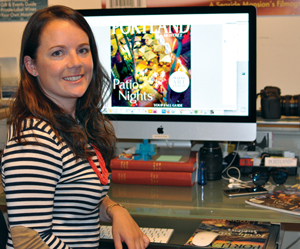 Portland Monthly is proud to announce that our Design Director, Meaghan Maurice, has been selected as one of FOLIO’s “30 Under 30” honorees along with rising stars from The Atlantic, Condé Nast, GQ, Men’
Portland Monthly is proud to announce that our Design Director, Meaghan Maurice, has been selected as one of FOLIO’s “30 Under 30” honorees along with rising stars from The Atlantic, Condé Nast, GQ, Men’
The team at 31-year-old Portland Monthly is celebrating but is not surprised by Meaghan’s success, which not only represents the innovative, creative character of our publication but of Portland, Maine, and its entire creative population. Meaghan began her career as our Design Intern and progressed to the position of Design Director, the leader of our Graphic Department. Her thoughtful designs and beautiful photos have time and time again shown our readers that we are Maine’s City Magazine. Meaghan’s work embodies our goals. Portland Monthly offers an extraordinary perspective that has made us a favorite for readers and lovers of Maine. Meaghan captures that spirit month by month in the pages of Portland Monthly. You can view Meaghan’s work here
Founding editor & publisher Colin W. Sargent’s short story Dirty Night Bingo is a finalist for the 2017 Col. Darron L. Wright Award.
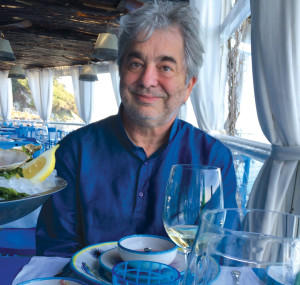 Founding editor & publisher Colin W. Sargent’s short story Dirty Night Bingo is a finalist for the 2017 Col. Darron L. Wright Award, conducted by Line of Advance, a venue that “provides a curated platform for the best in writing and other visual arts from American military veterans…Fitzgerald and Bierce, Vonnegut and Hemingway, O’Brien and Salinger. Some of the finest writers in American history served in the U.S. military during times of war. Line of Advance is a non-profit literary journal committed to providing a platform for the voices of the next wave of great American writers.”
Founding editor & publisher Colin W. Sargent’s short story Dirty Night Bingo is a finalist for the 2017 Col. Darron L. Wright Award, conducted by Line of Advance, a venue that “provides a curated platform for the best in writing and other visual arts from American military veterans…Fitzgerald and Bierce, Vonnegut and Hemingway, O’Brien and Salinger. Some of the finest writers in American history served in the U.S. military during times of war. Line of Advance is a non-profit literary journal committed to providing a platform for the voices of the next wave of great American writers.”
Read Dirty Night Bingo online!
Maine Sunday Telegram:
Book review: Real, imagined characters make memorable music in The Boston Castrato
Colin W. Sargent’s 1920s novel hits all the right notes on accuracy and fervor.
What a dream! What a song! Portland author Colin W. Sargent’s second novel, The Boston Castrato, is a whirlwind tale, abounding in fully realized historical and imagined characters, with convincing yet phantasmagoric settings that suggest a mild hallucinogen. Storylines appear to veer in all directions, but never fear, there is a core trajectory.
Shot through with wordplay that a few readers might term cruel and unusual punishment, the book is a nonstop delight to read. In spite of what the title might seem to suggest, it proves a love story.
This is the epic story of one Raffi Pesca, a Naples street urchin taken in by a creepy but earnest talent scout of a priest in 1906. The price of this ecclesiastical largesse is Raffi’s manhood. The reward: some gold coins and the gift of an extraordinary singing voice. However, high church officials, in a fit of early-20th century political correctness, defrock the priest, close his operation down and inform him that the “church is no longer in the monster business.” As with so many situations Raffi will soon encounter, this is the twilight of a tradition.
Not knowing quite what to do with the maimed child, church fathers rename him Rafaele Peach, give him a ticket to America, a start in the new world in a Bronx orphanage smack in the shadow of a neon sign for Underwood deviled ham. That sign, ubiquitous in the Northeast, will play a role over time and place, as both symbol and physical prop.
Adventures move our hero to Boston, Italy and back to the Yankee hub of the universe in the early 1920s, where a bewildering series of events ensnares and informs the now half-worldly, half-naïve but ever-ripening Peach.
At its widest scope, The Boston Castrato, is a first-rate picaresque, which should be read for the pure pleasure of the story, characters and ambiance. There are more circles than “The Divine Comedy,” as Sargent weaves together an investigation of the sterilization and sealing of “bad clams,” the unfolding of the Sacco and Vanzetti trial and Ezra Pound’s savaging of poet Amy Lowell’s imagism as “amygism.”
Truly, though, it is Sargent’s impressive knowledge of place, time, people and spirit that sets the novel spinning on its own internal axis. Indeed, the author states that his insight into Naples was largely gained during his hitch in the Navy as a helicopter pilot and, though the story only resides there briefly, it is most convincing. The reader is bound to ask where Sargent gained such a wondrous, convincing understanding of the Boston literary, cultural and criminal life in the 1920s.
As a great fan of that time and place, then in its gaudy twilight, this reviewer stands in awe of the historical assuredness of place and character-driven pace. Much of the action surges in and around the grand Parker House, a surviving icon.
As the blare of the 1913 Armory Show and Jazz Age swamp the bohemian Brahmins and their minions, and as gifted amateurs are overtaken by professionals, one enters a fantastic world not available in a Frommer’s Guide list of worthies, available nowhere else that I am aware of, at least not in such honesty and resplendence. The characters may all wear masks, but in the end they reveal parts of themselves in sober honesty.
In the end too, Boston Brahmin poet Amy Lowell and her presumed literary executioner both lie entombed in the same academic encyclopedias, each given their own devil’s due. As for Mr. Peach, he takes his place among literature’s delightful and original characters.
–Review by William David Barry
FMI about The Boston Castrato, visit www.colinwsargent.com
February 12, 2016
Associate Publisher Jesse Stenbak profiled in
Keene State Today Magazine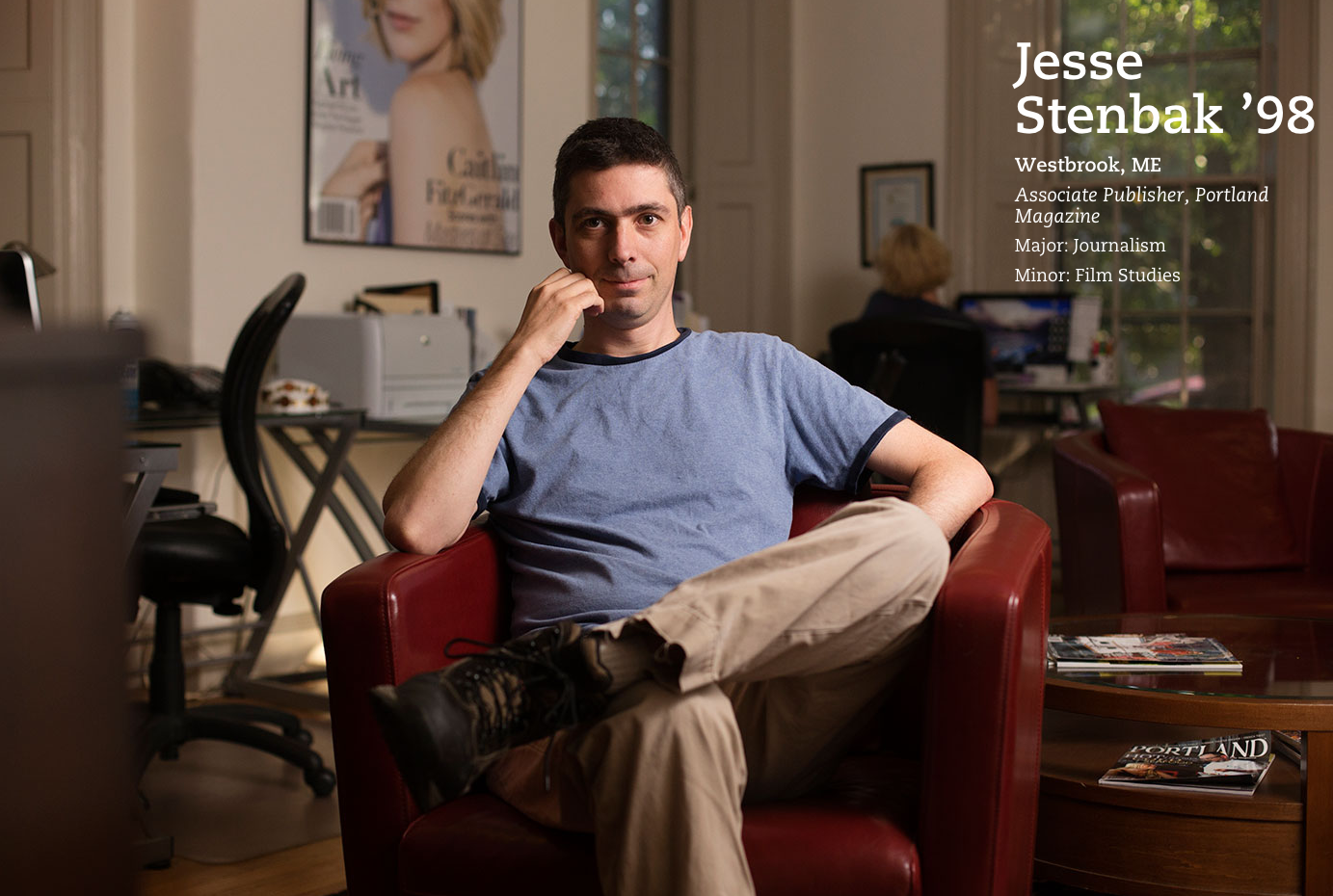
My brother Saul took a photography class in high school, and he seemed to really enjoy it, so when I got to high school, I took the class too. I really got into it, and I joined the school paper to take pictures. This was in Nashua, New Hampshire, where I grew up. I followed Saul to Keene State, and because of my high school experience I showed up in Elliot Hall for the first meeting of the year of the Equinox, the student newspaper. It became evident in short order that the person they had hired to be their photo editor did not know how to process film, which was very important in those days.
So within the first couple weeks of freshman year, I was the photo editor of the Equinox, because I knew how to develop film. The next year, the Equinox office moved to the new student center, and I became the first person to use the new darkroom there – and the only person, it turned out, because within a couple of years we were transitioning to digital
“The Barrymores of Comedy”
June 17, 2013
Portland Magazine Founding Editor & Publisher is Awarded Ph.D. in Creative Writing
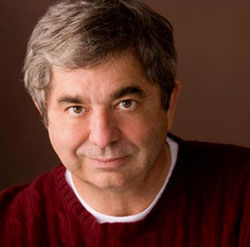 Colin W. Sargent has earned his Ph.D. in Creative Writing. Dr. Sargent successfully defended his dissertation at Lancaster University, Lancaster, UK. His research is in cognitive literary studies that explore reading as an out-of-body experience. The result is both a 380-page novel and a companion exegesis, The Negative Mirror. “Instead of reflecting, it allows you as a reader to disappear completely into a fictional universe,” Sargent says. His external examiner was novelist Dr. Martin Goodman (Look Who’s Watching), director of the Philip Larkin Centre at University of Hull; his internal examiner was Dr. Jayne Steel (screenplay for the BBC Audience Award-winning psychological thriller Frozen). His Ph.D. mentor Dr. George Green (Hound, Hawk) is the Creative Writing Ph.D. Program Director at Lancaster University, and his supervisor is Dr. Lee Horsley, a senior lecturer in English at Lancaster and an international expert in crime fiction (The Noir Thriller).
Colin W. Sargent has earned his Ph.D. in Creative Writing. Dr. Sargent successfully defended his dissertation at Lancaster University, Lancaster, UK. His research is in cognitive literary studies that explore reading as an out-of-body experience. The result is both a 380-page novel and a companion exegesis, The Negative Mirror. “Instead of reflecting, it allows you as a reader to disappear completely into a fictional universe,” Sargent says. His external examiner was novelist Dr. Martin Goodman (Look Who’s Watching), director of the Philip Larkin Centre at University of Hull; his internal examiner was Dr. Jayne Steel (screenplay for the BBC Audience Award-winning psychological thriller Frozen). His Ph.D. mentor Dr. George Green (Hound, Hawk) is the Creative Writing Ph.D. Program Director at Lancaster University, and his supervisor is Dr. Lee Horsley, a senior lecturer in English at Lancaster and an international expert in crime fiction (The Noir Thriller).
Sargent earned his bachelor’s degree in English at the United States Naval Academy, Annapolis, Maryland. He was a member of the inaugural graduating class of 2004 at the Stonecoast MFA Program, University of Southern Maine; is a former board member at Maine Writers and Publishers Alliance (MWPA); and served for five years on the board of trustees of Maine Reads. Sargent is a Maine Touring Artist and was named a 2002 fellow in literature by the Maine Arts Commission.
His first novel, Museum of Human Beings (McBooks, 2009), stalks the imaginary life and times of Jean Baptiste Charbonneau, Sacagawea’s son. His new novel, Hiding Nothing, takes place in Italy in 1903 and Boston in 1922, where his main character, Raffi Peach, is a clairvoyant concierge at the Parker House and séances are the social media.
Featured by MediaBistro for daring to go “beyond the usual” and selected for the New York Public Library’s permanent collection for its “original regional coverage and literary merit,” Sargent’s Portland Magazine, est. 1985, has just released Summerguide 2013, a newsstand favorite which sets records in ad pages and covers conceptual terrain such as “Dream Islands,” “Wabi-Sabi Maine,” and the first short story published by playwright John Cariani (Almost, Maine). For 27 years, Portland Magazine has offered original fiction, featuring stories by writers including Mameve Medwed, Sebastian Junger, Diane Lefer, 2013 Midland Authors Award-winner Jack Driscoll, John Buffalo Mailer, Rick Moody (The Ice Storm), and interviews with Maine-connected writers “from Stephen King to Marguerite Yourcenar to Annie Proulx. We have also published stories by emerging stars such as Joan Connor (AWP winner for History Lessons) and Morgan Callan Rogers (Red Ruby Heart in a Cold Blue Sea).”
Sargent sought the Ph.D., the culmination of five years of concentrated study, “so I could take the magazine’s writing to the next level and at the same time demystify the process for our contributors, many of whom connect with their first readers with us.” Among the Portland Monthly alumni who’ve met with publishing success: Hannah Holmes (The Secret Life of Dust), Jason Brown (Driving the Heart), and Gwen Thompson (Men Beware Women). “There is such great talent in and around Maine. I love sharing it with our audience,” Sargent says.
For more information, visit www.portlandmagazine.com.
October 15, 2012
Portland Magazine congratulates our former intern Gwen Thompson on the publishing of her novel Men Beware Women. Click here for more info on Gwen and her fabulous work of fiction.
October 12 Portland Press Herald Business section:
AWARDS and RECOGNITION
• Portland Magazine won nine national prizes at the American Graphic Design Awards for design excellence by Graphic Design USA.
Congratulations to our 2006 editorial intern Esmé E. Deprez for her new position as a reporter of Business Week.
16 September 2009
Portland Magazine Wins 5 National Prizes at the 2009 American Graphic Design Awards
New York—Portland Magazine captures five prizes at the prestigious national American Graphic Design Awards for design excellence in ceremonies conducted in Manhattan by Graphic Design USA.
The American Graphic Design Awards is a nationwide juried competition from one of the most respected design industry resources. The awards have been presented for over three decades, and the judges are composed of industry leaders in all aspects of graphic design.
Graphic Design USA’s prize announcement of the awards, including the individual issues of Portland Magazine that received the honors:
CONGRATULATIONS!
You have been selected as a winner in the 2009 AMERICAN GRAPHIC DESIGN AWARDS.
For more than four decades, Graphic Design USA has sponsored national design competitions that spotlight areas of excellence and opportunity for creative professionals. The American Graphic Design Awards is the biggest and broadest of these, open to everyone in the community: advertising agencies, graphic design firms, corporations, institutions, publishers and more. It honors outstanding work of all kinds and across all media.
For the fourth straight year, we saw a remarkable 8,000+ entries; of these, a highly selective 15 percent are recognized with Awards of Excellence.
Portland Magazine, Winterguide 2008
Portland Magazine, February/March 2008
Portland Magazine, Summerguide 2008
Portland Magazine, December 2008
Portland Magazine, February/March 2009
Again, congratulations and best wishes.
Gordon Kaye–Editor/Publisher, Graphic Design USA Rachel Goldberg–Awards Director
“Some magazines may win around two to three multiple awards, but it’s very difficult to win five,” says awards director Rachel Goldberg, noting “I believe Portland Magazine’s awards for excellence in publication design are the only ones north of Boston.”
Portland Magazine also won multiple American Graphic Design Awards for Design Excellence in 2007 and 2008, as well as six national graphic-design awards for front cover art direction at the annual Maggie Zine Awards sponsored by NewsStand Resource magazine of Greensboro, North Carolina, including First Prize and Best in Show.
“It’s a great way to open our silver anniversary celebrations to begin our 25th year,” says Robert Witkowski, Portland Magazine’s design director.
The full list of award winners will be published in the December 2009 GDUSA Design Annual. Previous publication winners include Condé Nast’s SELF, USA Today Weekend Magazine, and BusinessWeek.
Attention: Events & Culture Listings Editors
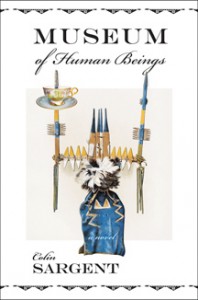 Book Signing & Reading Schedule
Book Signing & Reading Schedule
Museum of Human Beings (McBooks, hardcover, $23.95)
The acclaimed new novel by Colin Sargent about the fantastic life and times of Jean Baptiste Charbonneau, Sacagawea’s son, famous “expedition papoose” of the Lewis & Clark Expedition…Whatever happened to that boy?
Visit www.museumofhumanbeings.com for background info and a media page with downloadable cover art & author photo.
Please include in your books, arts, and entertainment calendar. **For book-cover art and updates, visit “Media” at www.museumofhumanbeings.com.:
3 November, 7 p.m., Reading & Book Discussion, Dyer Library, 371 Main Street, Saco, Maine 04072. Visit www.sacomuseum.org or call 283-3861.
29 November, noon to 3 p.m., Reading and Book Signing, L.L. Bean Retail Store, Main Street, Freeport, ME 04032. www.llbean.com
5 December, 2 p.m., Reading & Book Signing, Borders, 430 Gorham Road, Maine Mall, South Portland, Maine 04106, 207-775-6110
13 December, noon to 3 p.m., Encore Reading and Book Signing, L.L Bean Retail Store, Maine Street, Freeport, ME 04032. www.llbean.com
Reviews
“Spellbinding”—starred review in Library Journal
“Stylish”—Publishers Weekly
“Heart-Wrenching”—Smithsonian Institute
“Rich with unusual historical detail.”—Denver Post
“The sweeping American adventure novel “Museum of Human Beings” by Portland publisher, playwright and poet Colin Sargent is one of the most satisfying works of fiction that I have read in years.”—Maine Sunday Telegram
Playwright Sargent’s debut novel is a stylish look at the fate of Sacagawea’s baby son, Jean Baptiste Charbonneau, the first Native American to tour Europe—as a curiosity and entertainment, of course. Twenty-four-year-old Sacagawea, though married, becomes William Clark’s lover while helping guide the Lewis and Clark Expedition; after she dies on the trail, Clark adopts her son, Baptiste. Soon, Clark establishes his home in St. Louis, as well as a garish museum dedicated to his expedition, and sets to educating his new son. Soon, Baptiste is traveling Europe under the protection of Duke Paul, a cruel man who, when he isn’t exhibiting the boy to royal courts, repeatedly rapes young Baptiste. Six years later, Baptiste returns to America (astonishingly, still accompanied by Paul), where he confronts Clark over his mother’s mysterious death; unsatisfied and restless, Baptiste heads west and finds work as a fur trapper, an Army scout and gold prospector. Increasingly haunted by his mother, Baptiste revisits her in memories and visions that lend themselves nicely to Sargent’s lyrical prose. With historical cameos (Beethoven, Kit Carson, Washington Irving) and an impressively rounded portrait of the laid-back, introspective, nomadic Baptiste, this novel will satisfy fans of American history.
– Publishers Weekly
Authors on Museum of Human Beings…
“Yikes, there’s a market for this. It’s timely, it has feminist appeal, it has race appeal, it’s so American. The direction of American Literature has been from the East Coast to the West. There’s a new trend reversing this, a trend that whispers, ‘Somehow we are weary itinerants. Somehow the dream has failed.’ Museum of Human Beings is an unraveling of the patriarchy. It’s spooky like Hawthorne with a Toni-Morrison-like sense of place. It’s a huge and important story.”
– Joan Connor, AWP Award winner, for History Lessons
“In pulsating prose that triggers all of the senses, Museum of Human Beings takes us on a spirited journey to discover the far-flung life of Sacagawea’s son. Smart, imaginative, and historically-informed, this novel contains heartbreaks of many dimensions, all of them believable and thought-provoking. It captivated me, start to finish.”
– Bunny McBride, Pulitzer nominee and author of Women of the Dawn and Molly Spotted Elk: A Penobscot in Paris
“Magic. There is real heart to Museum of Human Beings, real depth and humanity, and in addition a plot that propels this reader forward. Full of polish and authority, as well as a story both cared-about and clearly imagined. I stand to applaud his talent. He’s the real thing.”
– Jack Driscoll, How Like an Angel
“A grand and interesting romp through history, an intriguing, masterfully written novel about a little-known person in history, Jean Baptiste Charbonneau, the child of Sacagawea.”
– Michael C. White, Soul Catcher
• According to the June 29 2009 edition of Mainebiz “Portland Magazine recently set an all-time advertising sales record of $229,619 with its Summerguide 2009 issue.”
June 4, 2009
Ahead of the Recovery Curve
Portland Magazine breaks all advertising records with Summerguide 2009
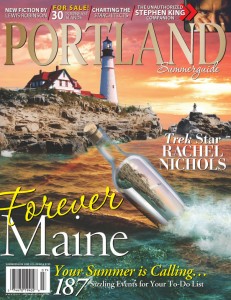
Award-winning Portland Magazine, the city magazine for Maine, launched Maine’s summer with a big splash by setting an all-time advertising sales record of $229,619.22 with the highly anticipated Summerguide 2009 issue. “This is the biggest magazine we’ve had in 23 years-232 luxurious pages that convey the three-dimensional, enveloping, dynamic panorama that is our beautiful state,” says founding editor and publisher Colin Sargent.
“This is dazzling proof that print media-if the ideas and images are seductive and stunning-is thriving. The reader gets the opportunity to stop, take a deep breath, and gain complete control of the experience…linger as long as desired over an image that sparks the imagination. We are an important component of the new media. We are the observation point-a tangible scenic outlook/rest area-on the information highway. There’s a reason why other representatives of new media, including The Printed Blog and electronic media such as the Food Network and Oprah have chosen to make a print version of their products: They recognize there’s no substitute for the experience of being drawn into a gorgeous magazine layout while you feel an incredible story sweep you away. The electronic world must have a beautiful front door, living room, and lounge. Portland Magazine has won 15 national design awards in the last three years; continued promoting fiction, with stars like Sebastian Junger, Sarah Graves, and Rick Moody contributing; and always provides an extraordinary perspective.”
Summerguide 2009 issue features interview with Rachel Nichols, the Maine native who is lighting up the screen in this summer’s blockbuster movies Star Trek and G.I. Joe: The Rise of Cobra. Portland Magazine’s classic story “Dream Islands” features complete islands for sale off the smoky coast of Maine.
“We’re grateful to our advertisers, who support and enhance this experience for our readers, for having the foresight to share in the benefits of connecting with them. We’re also grateful to the many members of Maine’s artistic community who so wonderfully express themselves here and appreciate the support of our advertisers.”
“We’re having fun here, and it shows,” Sargent says.
•March 2007 Portland Magazine wins national cover award for the third time! Congratulations. You’ve done it again! Your cover, Portland Magazine, February/March 2006, placed 1st in Category 3 – Circulation 10,000 to 74,999,in the 2006 NewsStand Resource cover contest. Your winning cover is featured in the spring 2007 issue of NewsStand Resource which will be distributed at the annual MPA Retail Conference in early March. In addition, your winning cover (along with all winning covers placing 1,2 or 3 in all categories) is entered into the Readers’ Choice Cover Contest (winners to be announced in April 2007). The top three covers will befeatured in the Summer 2007 issue of NewsStand Resource which will be distributed at the annual PBAA Convention in late June. A formal press release will go out to the industry early next week. We will mail your plaque and certificate with a copy of the spring issue shortly. Sincerely, Frances Becker Publisher NewsStand Resource
• March 2007 Multiple fiction contributor John Michael Cummings, who published his first short story with Portland Magazine in 1991, is getting his debut novel published by Penguin in early 2008. The House of My Father is a modern-day, coming-of-age literary novel about a troubled boy who finds a father figure in the abolitionist John Brown. For more info about the author, visit www.johnmichaelcummings.com.






